Content from the Brookings Doha Center is now archived. In September 2021, after 14 years of impactful partnership, Brookings and the Brookings Doha Center announced that they were ending their affiliation. The Brookings Doha Center is now the Middle East Council on Global Affairs, a separate public policy institution based in Qatar.
The assassination of Mohsen Fakhrizadeh-Mahabadi, the architect behind Iran’s nuclear program, has raised the spectre of a major conflict in the run-up to President-elect Joe Biden’s inauguration in January. Iran is under unprecedented pressure at home (facing economic reverberations of the Trump administration’s maximum pressure campaign) and in the region (as Tehran struggles to protect its influence in key countries like Iraq and Syria). It has suffered a wave of airstrikes recently, including an attack this week that purportedly killed a senior commander of the Islamic Revolutionary Guard Corps’ (IRGC) elite Quds Force near the Syria-Iraq border; in Iraq, the U.S. has imposed sanctions on an array of Iranian front companies.
Iran will survive these destabilizing events, though its leaders are convinced the administration (or some within it) sees the next two months as their last chance to settle a series of old scores with Iran. Far from pushing it to the brink, Tehran is still strongly positioned to pick up the pieces as the Trump administration makes its way out.
Iran’s dilemma
While Iran has believed the U.S. has sought its demise since the founding of the Islamic Republic in 1979, the notion of a major U.S. attack on the country or its allies has become increasingly palpable over the past year.
The assassination of Fakhrizadeh-Mahabadi is seen as a signal of intent, coming just days after a covert Israeli-Saudi-U.S. meeting that reportedly took place in Saudi Arabia. It comes 10 days after reports suggested President Trump was close to attacking Iran directly before instead looking at ways to strike Iran’s assets and allies elsewhere. The leadership in Iran faces a perilous conundrum in a precarious environment.
Tehran has historically relied on the presence of U.S. forces in the region to reinforce its deterrence capabilities, but the Trump administration has suggested it may withdraw its forces from Iraq and Afghanistan. This would diminish Iran’s ability to strike U.S. forces, and with that its ability to deter an attack. According to sources close to the Iraqi leadership, a number of militia leaders in Iraq, together with their patrons in Tehran, are convinced the Trump administration is seeking one last chance to settle its disputes with Iran, and that an attack will materialize if troops are withdrawn. These sources have noted that some militia heads have effectively either gone into hiding or have dramatically reduced their public engagements in anticipation of a potential decapitation campaign aimed at Iran-aligned groups in the region.
Iran could opt to absorb the blows or carry out limited (symbolic) retaliatory strikes. In Iraq, for example, its proxies may launch a barrage of rockets that cause limited damage. The idea is that this may deter its adversaries, but such a move risks paving the way for the U.S. and its allies to escalate their own response, while also creating second-order effects that could create a conflagration within Iraq.
Alternatively, Iran could initiate an expansive, pre-emptive attack against the U.S. and/or its allies out of concern of a U.S. first strike. Tehran would harness its proxy network to conduct a series of attacks in tandem and against a host of regional targets, including in the Gulf Arab states. These would be significant in their scale and magnitude, with the hope of staving off a major U.S. attack. But it could actually draw a major counter-strike from the U.S. and its allies, a major risk for Tehran. The regime in Tehran may feel pushed towards this option if there are further attacks on Iran or its allies in the coming days and weeks, a sudden withdrawal of U.S. forces in Iraq, and/or a wave of high-profile assassinations.
The strategic advantage
But Iran may still hold the strategic advantage. The U.S. and its allies have some difficult choices of their own to make. Aside from looking to torpedo U.S.-Iran rapprochement under the Biden administration, it’s hard to know what end game the Trump administration seeks. The regime could be weakened at home and in the region, and its proxy infrastructure could become dilapidated, but Iran can bank on two important realities.
Firstly, that U.S. allies in the Gulf, notably Saudi Arabia and the United Arab Emirates, have no appetite for a major conflagration. They are in the line of fire. Iran’s rivals do not have the stomach to commit to a full-scale effort to force the regime’s downfall.
Secondly, Iran is uniquely positioned to repair and rebuild its regional proxy networks. This is comprised of complex and multi-layered inter-personal and inter-organizational links, and undergirded by a diverse range of power centers: In Iraq, Syria, Lebanon, and Yemen, Iran has established parallel institutions that are deeply entrenched, formidable, and durable amid weak state institutions and volatile security environments. It has established powerful militia groups that can coalesce around shared values and objectives that ultimately tie them to the Islamic Republic.
Iran has excelled at executing a form of one-state, two-systems formula for conflict-ridden countries in the region. The state (e.g. in Iraq) is deliberately kept weak; Tehran does not seek to rebuild institutions in accordance with the conventional state-building norms and principles. For the West, for example, security sector reform would mean reconstructing conventional national armies that abide by international norms and laws. Iran, in contrast, opts for an approach centered around a host of armed non-state actors, and has no inclination to align such an approach with international norms and laws or encourage its allies to respect human rights. It establishes networks and institutions that parallel national institutions, keeping them weak. This opens the space for Iran to subjugate governing structures and political systems. Specifically, Iran creates or co-opts militias and informal authorities, allowing it to fill and exploit the gaps that emerge in fragile states. A key nexus is the Shiite faith: Iran builds social and religious networks centered on the Shiite faith and support for Iran’s theocracy. However, ideology is only one part of the equation.
Exploiting conflict and tumult
Iran does not simply opportunistically back or deploy proxies like other states do. Like its rivals and the U.S., Iran discards militias and drops its support if necessary; unlike its rivals, Tehran is unparalleled at inventing and re-inventing proxies. And Iran has a marked capacity to exploit divisions among local movements that challenge its interests. For example, Asaib ahl al-Haq, one of Iraq’s most powerful Shiite militias, was spawned from the Sadrist militia movement led by Muqtada al-Sadr, a movement that has historically contested Iran’s expansionism. Similarly, in Iraqi Kurdistan — following the 2017 Kurdish independence referendum — Iran divided the Kurdish leadership and mobilized its proxies into Kirkuk against the Kurdish Peshmerga. This was in large part as a result of a deal it struck with the Patriotic Union of Kurdistan (PUK), which rules Iraqi Kurdistan as part of a coalition government led by the Kurdistan Democratic Party (KDP).
Iran gifts willing groups with money, weapons, and a patron that is ideologically aligned; where there may be no obvious ideological alignment, Iran’s other card is its impressive track-record for transforming its partners into formidable political forces. Iran’s partners actually prosper, whereas U.S. allies have been repeatedly defeated, subdued, and humiliated by Iran’s proxies. Arab Sunni groups backed by the U.S. in both Syria and Iraq have lost every major political and military conflict. Longtime U.S. allies, the Kurds, were defeated in October 2017 by Iran’s proxies in the Iraqi city of Kirkuk, even with U.S. forces stationed in the city.
If the Trump administration’s objective is to destabilize Iran and inflict chinks in its armor, then this one-dimensional approach ignores the fact that Iran is exceptionally skilled at repairing and, where necessary, rebuilding its security infrastructure that insulates the regime from the short-term damage that its adversaries inflict. That said, a concerted effort on the part of the outgoing administration and Israel to inflict as many dents as possible in Iran’s regional and domestic security infrastructure in the run-up to January 20 could effectively create a new normal that plays out over the next four years.
The logic behind this would be two-fold: to ensure Iran does not have the luxury or the breathing space to restore its coercive capabilities, and to complicate a U.S. return to the nuclear agreement. Iran relies on exaggerated estimates of its military prowess and the mystique or aura of invincibility that surrounds some of its proxies, but these are diminished with each assassination, with severe implications for the authority and influence its proxies can exert in neighboring countries like Syria and Iraq that are essential to its long-term security.
Still, this approach may not yield the results Iran’s rivals would like. It fails to account for the second- and third-order effects of Israeli or U.S. strikes that enable sustained environments of repression and violent tumult in Iran’s neighborhood that the IRGC has a marked track-record for exploiting. It is in these environments that Iran shapes the contours of regional security dynamics.
At worst, Iran has to contend with the possibility that its rivals can and will decapitate the cohort of individuals that are central to its nuclear program and its foreign legion of proxies. But leaders in Tehran will take comfort in knowing that its adversaries will struggle to eliminate the institutions and networks underpinning Iran’s national security, both at home and in the region.
The Brookings Institution is committed to quality, independence, and impact.
We are supported by a diverse array of funders. In line with our values and policies, each Brookings publication represents the sole views of its author(s).

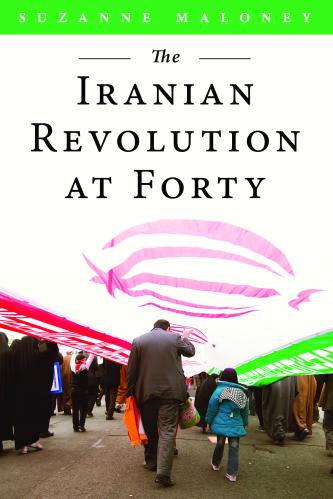
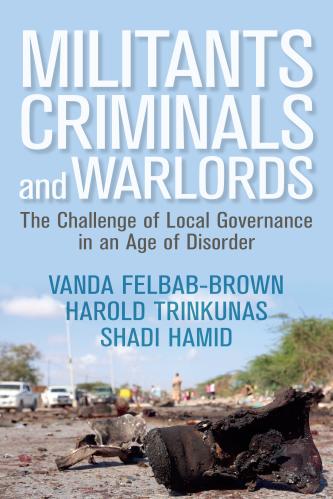
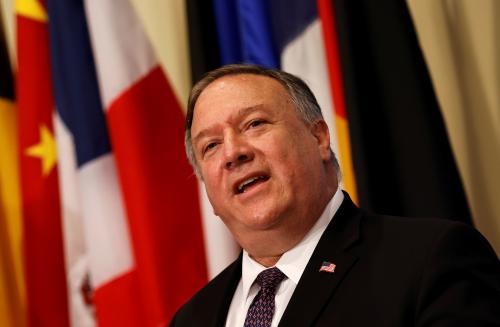
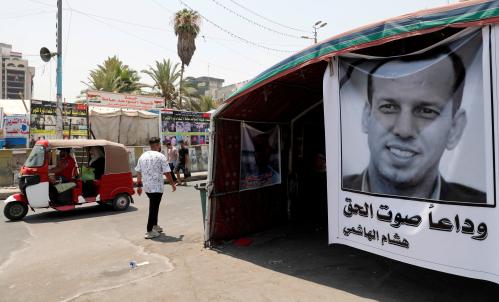



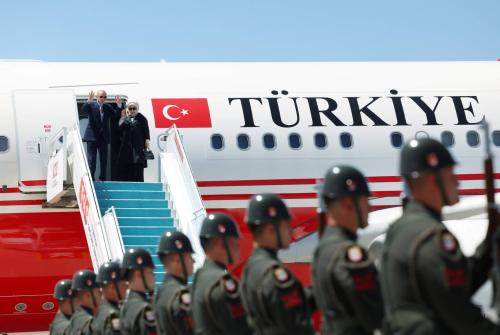
Commentary
Iran will lose the battle, but win the war
December 1, 2020